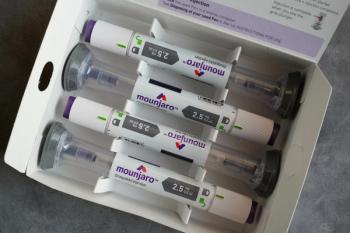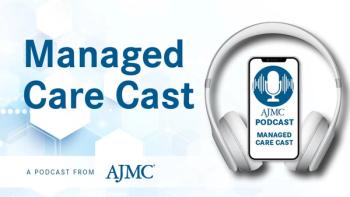
Obesity
Latest News
Latest Videos

CME Content
More News

Maridebart cafraglutide showed promising results in weight loss, offering a monthly treatment option for obesity with significant health benefits.

Conversations between the patient and provider should focus on the stakes of antiobesity treatment and continuation, says Hamlet Gasoyan, PhD, Cleveland Clinic.

Data from 2019 to 2023 show 9.2% of adults with obesity reported cost-related medication adherence.

In a Cleveland Clinic cohort, patients who stopped treatment for obesity had smaller weight losses to start, making these gains easier to maintain, explained Hamlet Gasoyan, PhD.

For patients with obesity, clinicians should move beyond a "try and fail" approach to lifestyle interventions and prioritize weight management medication when it can deliver crucial cardiovascular benefits.

Discontinuing the weight loss treatment before hitting the recommended maintenance dose contributes to low-value care despite provider follow-up and efforts to manage side effects, says Hamlet Gasoyan, PhD, Cleveland Clinic.

Real-world cost barriers and insurance denials contribute to early discontinuation of injectable glucagon-like peptide-1 (GLP-1) receptor agonists, reducing their effectiveness for weight loss, explains Hamlet Gasoyan, PhD, Cleveland Clinic.

A new analysis of obesity guidelines suggests more evidence is needed to develop stronger guidelines for the transition period between childhood and adulthood.

Patients who remained on treatment, especially at higher doses or on tirzepatide, were more likely to achieve clinically meaningful weight loss and improved glycemic control.

Adolescents face significant barriers to obesity medication access, despite a surge in prescriptions. Discover the disparities and potential solutions in obesity care.

Explore the evolving landscape of glucagon-like peptide-1 receptor agonists (GLP-1 RAs) for obesity, highlighting access challenges and payer coverage trends affecting treatment options.

Evernorth has capped antiobesity drug monthly co-pays at $200 in a move to improve access and affordability amid new drug pricing initiatives.

While the US leads in early-phase obesity trials and investment, the country also faces challenges in disease burden, trial saturation, access, and long-term care distinct from other parts of the world.

Self-paying patients can now obtain semaglutide at a lower cost through trusted telehealth providers.

Disparities in prescribing semaglutide and tirzepatide for obesity reveal social factors affecting access and highlight the need for equitable treatment strategies.

Expanding Medicare coverage for glucagon-like peptide 1 (GLP-1) receptor agonists could significantly reduce obesity-related health issues, but it also risks adding tens of billions in new costs, highlighting the need for smart policy strategies to ensure access, affordability, and long-term sustainability.

Sleep duration and sleep pattern score were both independently associated with obesity occurrence, and there was a nonlinear relationship between obesity and sleep duration.

Using commercial insurance claims data and the US launch of tirzepatide as their dividing point, John Ostrominski, MD, Harvard Medical School, and his team studied trends in the use of both glucose-lowering and weight-lowering medications, comparing outcomes between adults with and without type 2 diabetes.

Tirzepatide is approved for 3 indications in the US: type 2 diabetes, chronic weight management, and obstructive sleep apnea.

Findings from the interviews offer insight into potential strategies for reducing binge eating among patients who experience food insecurity.

Researchers warned that to achieve such reductions, greater uptake of the medication among indicated patients is needed.

Tirzepatide and Semaglutide Improve Weight Loss, Cardiovascular Conditions, but Deemed Too Expensive
Weight loss drugs like tirzepatide and semaglutide are growing in popularity and offer significant health benefits, but they are not cost-effective at their current prices, according to a new evaluation, placing economic burdens on patients with obesity in the US.

Expanding coverage and access to glucagon-like peptide-1 (GLP-1) medication can be beneficial for all with the cooperation of multiple parties in health care.

New diabetes medications are pressuring Medicare Part D financially as they drive up prescription drug costs amid rising rates of type 2 diabetes and obesity.

George Jones of UpScript Health discusses telemedicine's evolution from basic e-prescribing to real-time video consultations, expanding treatment beyond primary care.


















































